Basics of the Fire Service Elevator
How many times have you been to a building that has an elevator equipped with fire service controls and known exactly how to operate these controls? Now you will learn the parts and functions of the elevator. Part 1 of this series will explain the Fire Service Elevator Control Keys and Fire Service Elevator Phases 1 & 2.
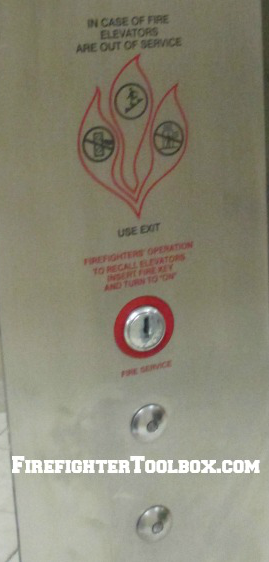
Fire Service Elevator Controls
Fire Service Elevator Control Keys
The Fire Service Elevator Controls are for the use of Emergency Service Personnel, both Fire and EMS.
In order to activate the Fire Service Controls, the elevator car or cars are controlled by a Fire Service Elevator Key.
These keys will activate Phase 1 recall to the predetermined level. Then the key can be removed from the outside control panel and then be inserted in the elevator car’s Fire Service Elevator Controls.
During pre-planning of buildings, it is extremely important that we locate the Fire Service Elevator key and make sure that it properly works. If you are unable to locate the key or it does not properly function, contact your local Fire Prevention Bureau so that the situation can be rectified.
The Fire Service Elevator Control keys should be located in the elevator motor room. Some fire departments have a copy of the fire service elevator control key for buildings in their response area.
Several states have created a standard fire service elevator key. This standard key is mandated for all newly constructed or renovated elevators.
The states of Massachusetts, New Hampshire, and New Jersey have a standard Fire Service Elevator Key which is the Yale 3502 Key. Florida has standard keys based on which region of the state you are located.
Older model elevators that have not been retro-fitted with the new standardized key will have their own Fire Service Elevator Control Key.
What is Phase 1?
Phase 1 for the Fire Service Elevator Control allows emergency responders to gain control of elevator cars within the elevator bank (multiple cars in one location) and safely override the occupant’s controls. This override will recall (return) the elevator car to a Designated Level of the building. This override will not allow the elevator car to be called up to the fire floor. The Designated Level is usually the lobby or main entrance where emergency personnel most likely will enter the building.
It is important to pre-plan each building that has an elevator or elevators in your response district to know where the Designated Level is located and to know if the elevator has Phase 2 capability.
Pre-planning this information is important for when there is an incident in that building; you won’t waste precious time trying to locate the Designated Level in order to recall the elevators and properly operate them. Pre-planning is a sign of a knowledgeable and professional company.
What is Phase 2?
Phase 2 for the Fire Service Elevator Control allows emergency responders to control specific elevator cars in that particular bank of elevators. Firefighters are able to gain access to upper floors during a fire incident.
EMS personnel can also use Phase 2 to gain access to the upper floors during an EMS incident. Phase 2 gives EMS crew the ability to hold the elevator car on that floor to facilitate rapid transport of the patient down the elevator to the ambulance. By keeping the elevator car in Phase 2, the EMS crew can use the car as an express elevator not having to stop at any floors on the way up and down to the Designated Level.
Watch for the next article on how to operate Phase 1 and Phase 2 of the Fire Service Elevator Controls.
Stay safe.
Photos courtesy of John Hayowyk, Jr.

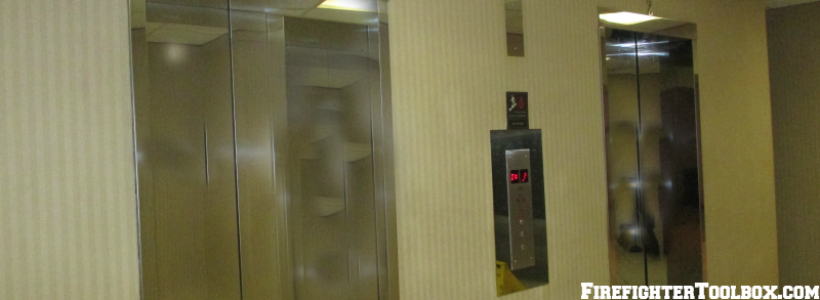

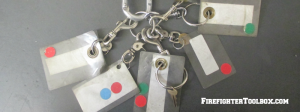
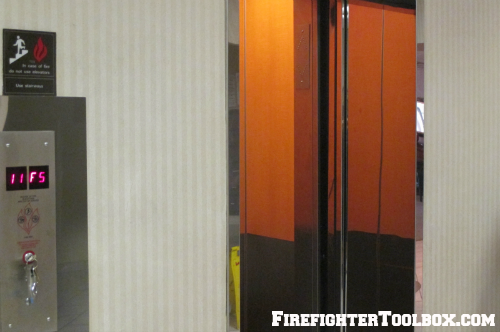
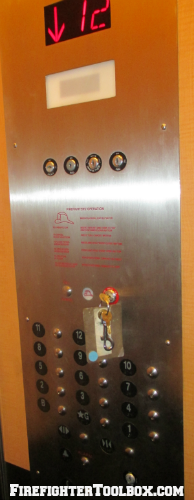




Hey John,
That was a fantastic tutorial on the basics of elevator fire service operation. Have one in the works on using drop keys for removing people from an inoperative car? We carry a set of drop keys on all of our heavy rescue engines. Although many members know when they are needed, some struggle with actual use of them and another tutorial along the lines of this would be fantastic.
Robert,
Thank you. I am currently writing about how to use the Phase 1 & Phase 2 of the Fire Service Elevator. Then I am planning on writing about how to safety handle a stalled elevator car incident with extrication of trapped occupants, and how to use the Elevator “Drop Keys” to access open and the exterior door to the shaft and stalled elevator car.
Thanks ,
John